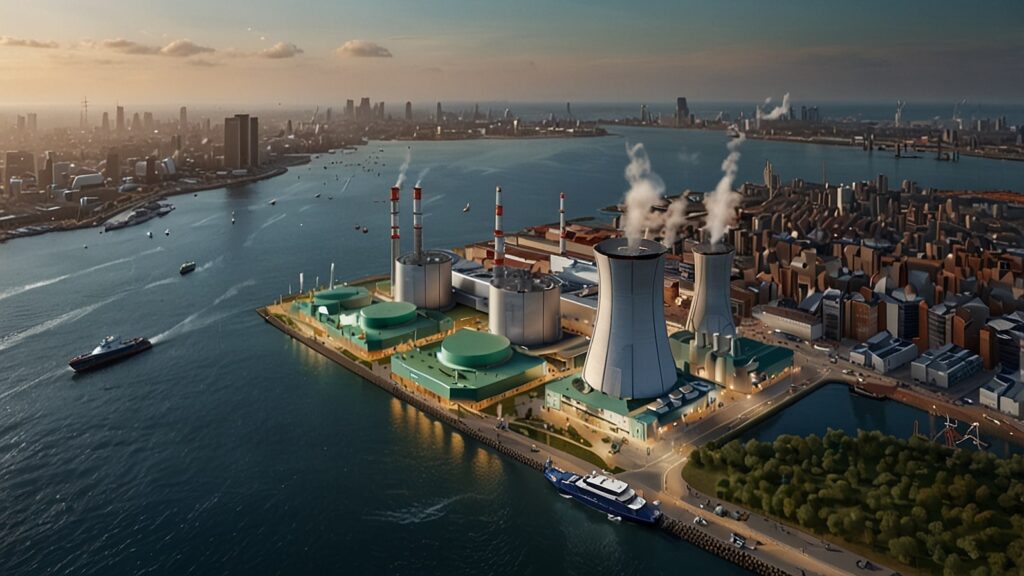The Netherlands has made an important announcement in its quest to have a greener maritime operation; the first shore power plant to cater to cruise ships will be launched at Cruise Port Rotterdam.
This new facility, which will open its doors in early 2026, is expected to decrease the number of emissions and noise pollution of docked vessels and is also directed at the sustainability principles worldwide. The port authorities announced the announcement today, and it reveals the level of environmental stewardship that the country is concerned with, as there has been an increasing worry over climate change.
The cruise ships will be able to link to land-based electricity whilst berthed as a result of the project, where they have taken more than two years to develop.
Such a cold ironing process is likely to significantly reduce the amount of toxic substances that are emitted into the air. The authorities of the Port of Rotterdam said that the facility will be completed by March 2026, and the initial connections should be expected right after.
A Maritime Sustainability Milestone
The shore power plant is an innovative move in the cruise industry in the Netherlands. The installation will be at the Holland Amerikakade in Cruise Port Rotterdam to meet the rising demand of cruise lines that are environmentally friendly. Rotterdam, which is among the most popular cruise centres in Europe, receives dozens of calls each year with some of the leading cruise companies such as AIDA Cruises and Holland America Line.
The development of the project indicated that the design of the facility is using the latest technology in order to have a smooth integration with different types of ships. One of the most significant attributes is a 230-meter-long cable duct in the quay coupled with a 1.5-kilometre, sustainable electricity grid connection, which goes as far as Maashaven to Wilhelminakade. The cooling system will use water supplied to it by the nearby Maas River, which is to encourage energy-saving and reduce the environmental impact.
This is an initiative when the cruise industry faces accusations of carbon emissions. As the traditional practice is to turn off the engines of their ships, spend hours or days in port, the traditional practices are highly contributing to local air pollution. The new facility will establish a precedent among other port facilities in Europe, particularly since the EU requires every cruise ship to switch to shore power by 2030.
Partners and Technical Innovations
This project is a joint activity to which several stakeholders are involved. The authority of Port of Rotterdam and the Municipality of Rotterdam are the main participants in the initiative, along with the energy providers (such as Eneco and Stedin), engineering firms (including IGUS, J.P. van Eesteren, Heijmans, Royal HaskoningDHV and Xylem). The core installation is to be constructed by the Danish firm PowerCon, which is a company with expertise in high-voltage marine power systems.
There are technical advances, such as high-capacity transformers that can deliver up to 16 MVA of power, which is adequate to power even the largest cruise liners. The system has been designed to take care of international vessels by supporting 50 Hz and 60 Hz. There is the implementation of safety measures, which include automated monitoring and automatic shutdowns to prevent disruptions.
The project is funded partly through a combination of both government and non-government funds, one of which is the EU grants on green infrastructure. Although it is not discussed what specific investments will be made, it is estimated that this is tens of millions of euros, depending on the size and sophistication of the construction.
Environmental Impact and Advantages
It is estimated that upon its operation, the shore power plant will deliver huge environmental benefits. Switching to grid electricity can help cut carbon dioxide (CO2) on ships by as much as 90%, as well as decrease nitrogen oxides (NOx) and particulate matter (PM) by large margins. The level of noise will also be reduced, and it will help the surrounding residential places and wildlife.
The port officials explain that the facility would be able to link up to three-quarters of the calling cruise ships in the first year, which would eliminate thousands of tons of emissions each year. This is in line with the overall vision of Rotterdam, which is to be a carbon-neutral port by the years 2050. Enhanced quality of air benefits the local community, which could have reduced the health hazards of pollution.
In addition to this, the project is beneficial to the local economy in that it encourages sustainable tourism. Carnival Corporation, through its AIDA Cruise, has shown excitement in green practices by cruise lines. In 2026, AIDA is scheduled to make more than 30 calls in Rotterdam, most of which will be powered by shore.
Future Outlook
In the future, the Rotterdam shore power plant might be a springboard to expansions not only in the Netherlands but also in other countries. Similar facilities are being discussed in Amsterdam and other ports, pushing the maritime infrastructure toward electrification.
This launch makes the Netherlands one of the pioneers of sustainable shipping, ahead of the regulations curve. With the global cruise traffic going down after the pandemic, this innovation would ensure that growth would not be at the cost of the planet. Experts in the industry foresee a future where shore power is made a norm by the year 2030, and this is expected to change the manner in which ports are operated across the globe.
To conclude, the Cruise Port Rotterdam 2026 launch is a key step in combating climate change, which is a combination of technology, partnership, and a better future vision.

Leave a Reply